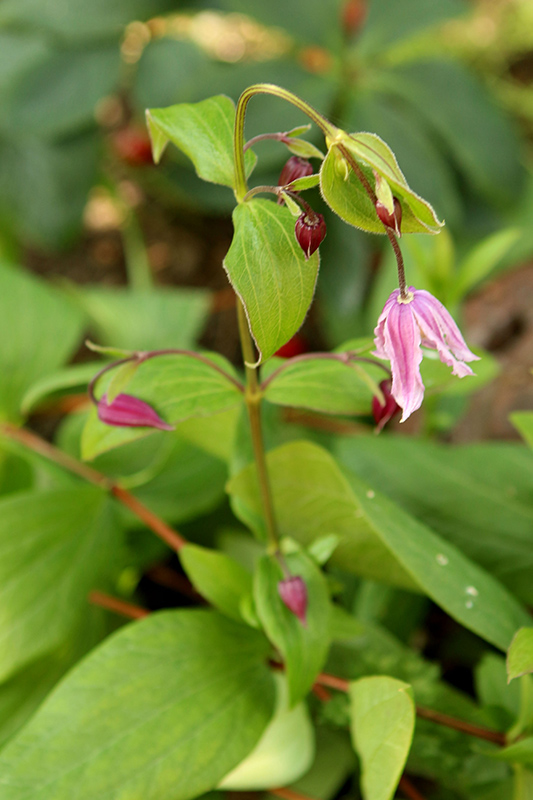Pitcher’s Leather Flower
Description
This beautiful climbing perennial features masses of nodding, urn shaped purple to red flowers over a long season, followed by interesting, dark red to brown seed heads; great for arbors or walls; heat and drought tolerant; dies to the ground in fall
Landscape Attributes
Pitcher's Leather Flower is an herbaceous perennial vine with a twining and trailing habit of growth. Its medium texture blends into the garden, but can always be balanced by a couple of finer or coarser plants for an effective composition.
Pitcher's Leather Flower is recommended for the following landscape applications;
Planting & Growing
Pitcher's Leather Flower will grow to be about 12 feet tall at maturity, with a spread of 24 inches. As a climbing vine, it should either be planted near a fence, trellis or other landscape structure where it can be trained to grow upwards on it, or allowed to trail off a retaining wall or slope. It grows at a fast rate, and under ideal conditions can be expected to live for approximately 20 years. As an herbaceous perennial, this plant will usually die back to the crown each winter, and will regrow from the base each spring. Be careful not to disturb the crown in late winter when it may not be readily seen!
This plant does best in full sun to partial shade. It does best in average to evenly moist conditions, but will not tolerate standing water. It is not particular as to soil type or pH. It is somewhat tolerant of urban pollution. Consider applying a thick mulch around the root zone in both summer and winter to conserve soil moisture and protect it in exposed locations or colder microclimates. This species is native to parts of North America.
Pitcher's Leather Flower is a fine choice for the garden, but it is also a good selection for planting in outdoor containers and hanging baskets. Because of its spreading habit of growth, it is ideally suited for use as a 'spiller' in the 'spiller-thriller-filler' container combination; plant it near the edges where it can spill gracefully over the pot. It is even sizeable enough that it can be grown alone in a suitable container. Note that when growing plants in outdoor containers and baskets, they may require more frequent waterings than they would in the yard or garden.

